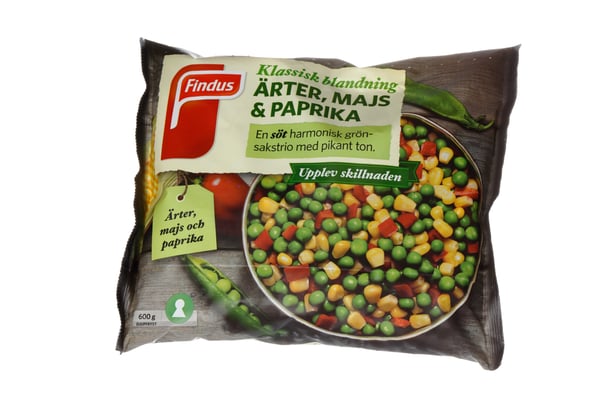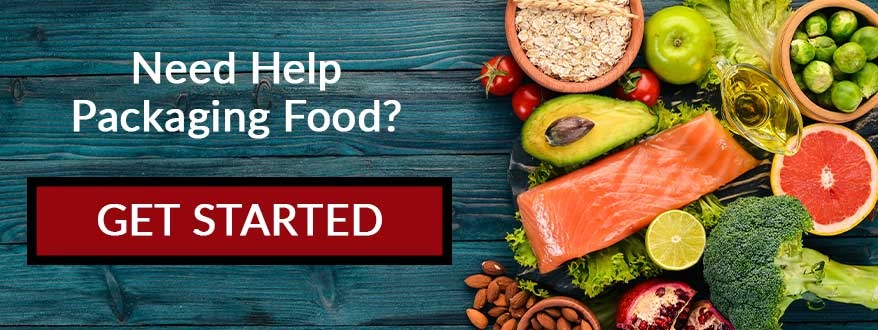Exploring The Different Types Of Frozen Food Packaging
When it comes to frozen food packaging, you need to be sure that safety is your first concern. Besides that, you will have to choose the appropriate materials that can withstand freezing temperatures. Depending on your budget, packaging, and material needs, frozen food packaging is a dynamic process that requires the utmost attention to detail.
We have been providing food packaging for decades here at Industrial Packaging, and we often get questions about the different types of packaging materials for frozen food applications. In this article, we will explore the different kinds of packaging supplies that are best suited for packaging frozen food.
What Are The Important Elements Needed In Frozen Food Packaging?
First of all, what is frozen food packaging?
The most popular options for frozen food packaging often includes but is not limited to cardboard, metal cans , paperboard, wax coated paper and other flexible packaging supplies. One of the most popular forms of frozen food packaging is Polyethylene (PE) shrink film which is able to resist temperatures all the way down to -40 degrees.
Here are some features of frozen food packaging materials:
- Protection from spoilage and off coloring
- Easy to fill
- Easy to seal
- Easy to store
- Moisture blocking and resistant
- Made of FDA food-grade substrates
- Strong
- Doesn’t become brittle and crack at low temperatures
- Resists grease, oil, and water
Each of the items above relates to the essential aspects of packaging frozen foods. The materials listed below all meet these requirements regarding various formulations of each material. When packaging frozen foods, safety, nutritional labeling, and consistency is vital.
What Are The Different Types Of Frozen Food Packaging?
- Shrink Film
- Wax Coated Cardboard
- Glass
- Aluminum
- Flexible Bags
- Lidding Films
- High barrier thermoforming film
- IQF polyethylene
- Skin film
Below, we will explore each type of frozen food packaging mentioned above and explain the applications and uses of each kind of material.
1. Shrink Film For Frozen Food Packaging
Shrink film (also known as shrink wrap) is one of the most popular forms of frozen food packaging. It is used on millions of packaging lines across the globe, including those of the largest food packaging companies in the world. Shrink film is a plastic film that is commonly made out of one of three main formulations, including polyethylene, polyolefin, or poly-vinyl-chloride.
When it comes to food packaging, polyolefin is your best choice. Polyolefin shrink film is FDA food-safe approved and can also be made kosher. Polyolefin shrink film is perfect for sealing boxed frozen foods such as pies, pizzas, cakes, baked goods, vegetables, fruit, and almost every other type of frozen food.
As you can see in the video above, polyolefin shrink film is used in the packaging of frozen steaks. This is a common frozen food packaged with shrink film. The box will be wrapped in shrink film and run through a heat tunnel to shrink the film to the box. This helps to prevent the formation of vapor or moisture and also helps to prevent freezer burn.
Need Help Packaging Food?
2. Chipboard SBS (Cardboard) For Frozen Food Packaging
Chipboard (commonly thought to be cardboard) is ubiquitous in the packaging of frozen foods. Boxes made from chipboard are often used for packaging pies, veggies, pizza, cakes, and various other types of frozen food products. Chipboard boxes are sturdy, durable, and easy to shrink wrap. They also allow for easy unitizing on pallets for shipping across the country.
Commonly used in tandem with shrink film, chipboard boxes are also popular because they can be printed, edge-to-edge, with vibrant and colorful branding imagery, text, and graphics.
This makes for chipboard boxes to be very visually appealing to consumers. Most often, a full graphic of the food contained inside of the box will be printed on the cover to entice consumers and induce a sense of hunger.
You can see various examples of this by walking down your local supermarket's frozen food aisle and inspecting the different products that are contained within chipboard boxes. As they are also FDA approved and food-safe, chipboard boxes make for an excellent choice when it comes to frozen food packaging.
3. Wax Coated Cardboard For Frozen Food Packaging
Wax coated cardboard is yet another highly popular form of frozen food packaging. Specifically for frozen foods of which the container itself is to be heated. For example, a popular application for waxed coated cardboard containers is frozen Chinese food.
The wax-coated cardboard containers are heat resistant and can be placed directly into the microwave and heated until the food inside is cooked and ready to eat.
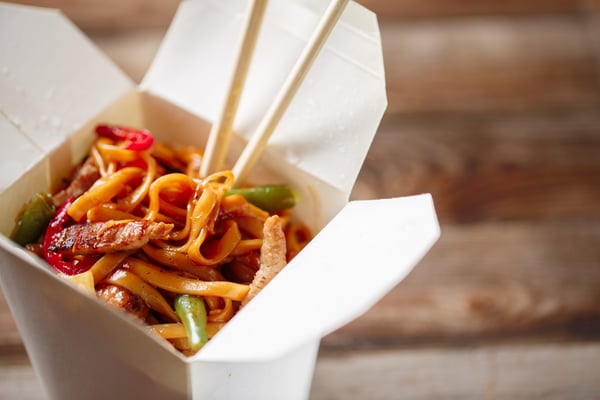
The trays used for TV dinners and other pre-made frozen meals often utilize a wax-coated cardboard tray for this same reason. The trays are often sealed with shrink film.
The consumer will remove the tray from a shrink film sealed cardboard box, poke holes in the film on the tray and place the tray into a microwave. The food is then cooked for the amount of time listed on the side of the container.
Wax coated cardboard boxes, trays, and other shapes of containers are popular because of their strength, diversity, and heat resistant capabilities. Unfortunately, wax-coated cardboard is not recyclable and, most of the time will end up in a landfill.
4. Glass For Frozen Food Packaging
Next, we have Glass. While not as famous for packaging food in America, glass containers made from specific food-grade glass formulations are used for packaging for some food applications, particularly in Asian countries.
More commonly, glass containers are used here in the USA for storing unused portions of food or meals specifically made to save for future use in glass containers.

From a retail standpoint, using Glass is uncommon because Glass is a weighty material. Glass has an extremely high carbon footprint and is very costly to ship, particularly long distances.
That being said, Glass is sometimes used for packaging luxury food items such as ice cream and gelato. In this way, Glass is often used as a form of luxury packaging for applications that have very demanding consumers who value luxury more so than the everyday customer.
5. Aluminum For Frozen Food Packaging
Aluminum is another standard frozen food packaging supply. Most commonly, aluminum foil pans are used for packaging food items such as lasagna, manicotti, salisbury steaks, and various other types of foods.
The top of the foil pans often features cardboard or waxed coated cardboard topper that slides on the top of the container and holds in place with foil tabs on each side of the pan.
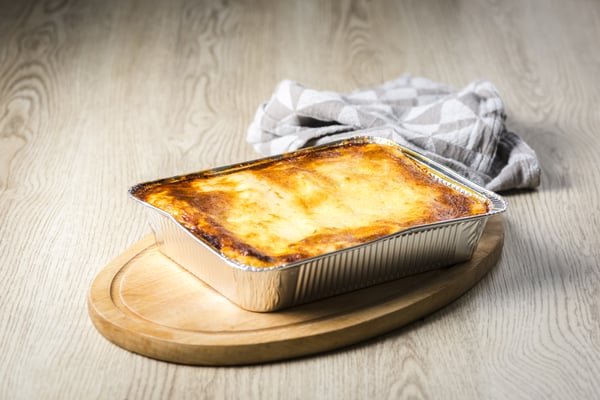
The filled foil pans often end up packaged inside of the cardboard box, which is then sealed in shrink film. When opened, the cardboard box and topper are removed, and the aluminum pan is placed directly into the oven for cooking.
While aluminum is recyclable, it is often difficult to do so with used aluminum foil pans due to grease, food bits, and other leftover food items that are often hard to remove from the inside of the container. Scrubbing does not always result in a clean container, even with much effort. Because of this, aluminum foil pans often end up in landfills.
6. Flexible Bags For Frozen Food Packaging
Flexible bags are a type of flexible packaging supply made for packaging food. When dealing with frozen foods, the most common flexible bags used are pouches made from food-grade plastics, foils, or other food-safe materials.
These flexible pouches are often a variant of stand up pouches or pillow pouches. They are made specifically for frozen food applications such as the packaging of frozen vegetables, fruit, pre-made meals, pasta, and other types of frozen foods.
Some types of frozen food bags are completely clear with no or little branding aesthetics and are used for packaging frozen baked goods such as bread, rolls, and similar items.
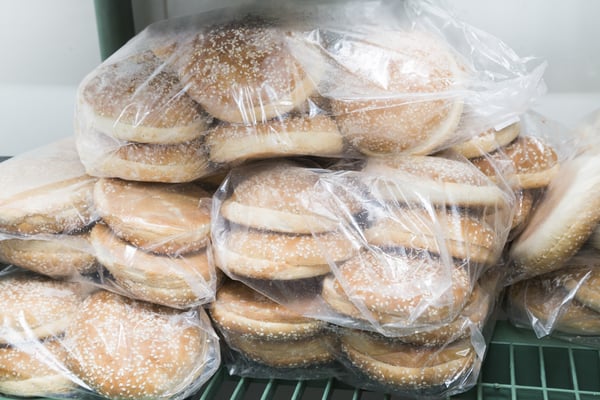
7. Lidding Films For Frozen Food Packaging
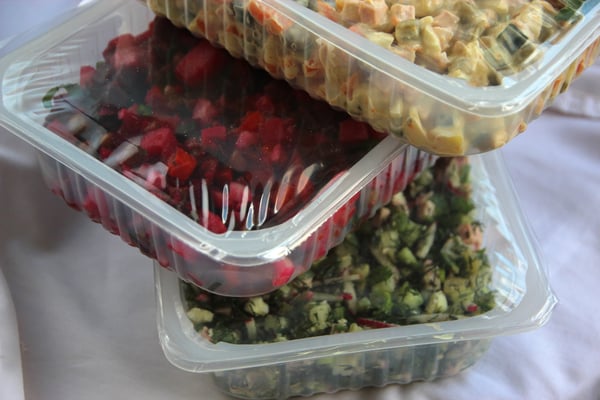
Lidding film is a plastic film that is used to create lids for different types of containers. The films are FDA approved and food-grade. Lidding films can be printed with high quality, full-color branding, and graphic design elements that will help to catch the attention of the consumer in the frozen food aisle. They are often also left clear for full visibility of the product contained within.
8. High Barrier Thermoforming Film For Frozen Food Packaging
High barrier thermoforming film is a special type of flexible packaging film. It boasts amazing thermoformability that allows for it the be the perfect solution for various applications. It is made from cutting edge plastic resins and made exclusively for these types of specialty films. This type of film offers thick corners and better film memory.
High barrier thermoforming films have superb strength and better puncture resistance. The film features ultra-glossy sheen and provides superior scent, taste, and ultraviolet light protection capabilities. These specialty films are available in a range of gauges.
9. IQF Polyethylene For Frozen Food Packaging
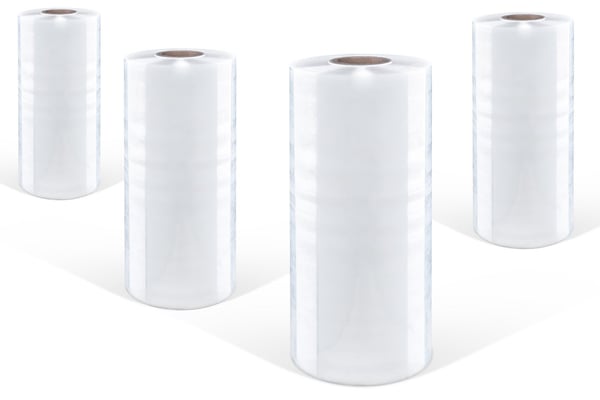
IQF stands for “individually quick frozen,” an action that freezes food extremely fast, so there is little to no damage to the cell structure of the frozen food. IQF polyethylene wrapped food moves through a blast freezer around 40 degrees under zero Fahrenheit. The finished food products are then sent to supermarkets frozen food sections.
10. Skin Film For Frozen Food Packaging
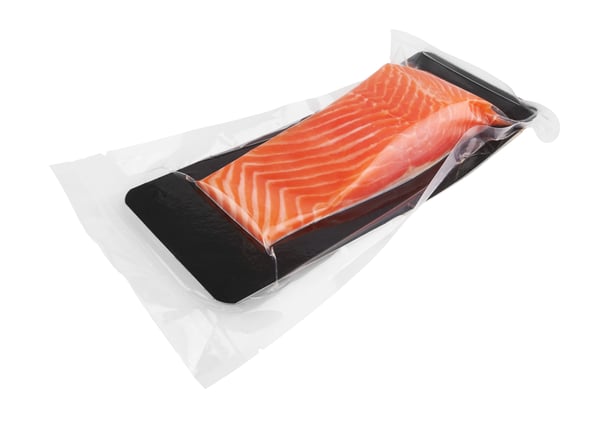
Skin film is a specialty film made to uniformly wrap products and seal the product to a printed skin board or corrugated cardboard plate. Skin film is commonly used for packaging salmon, trout, and other various types of frozen seafood.
How To Source Frozen Food Packaging
If you are interested in sourcing frozen food packaging for your business, feel free to reach out to one of our packaging professionals. We can help you to source the right frozen food packaging materials and machinery vendor, even if that is not necessarily us.
We would advise you to compare at least a couple of packaging companies and request information from each about their capabilities with frozen food packaging, machinery, and materials.
Once you have chosen a vendor, it would be well advised to bring them into your business and allow them to analyze your packaging line in person. This will give them the opportunity to provide you with a comprehensive proposal on which types of frozen food packaging machinery and materials are right for your products and your business.
About Nathan Dube
As the Digital Marketing Specialist at Industrial Packaging, I am honored to create content for such a phenomenal company and work with one of the greatest teams in the Packaging Industry. Whether creating a video, writing blog posts or generating other pieces of content and multimedia, I am always excited to help educate and inspire our prospects and clients to reach their highest potential in regards to their packaging processes and needs.




